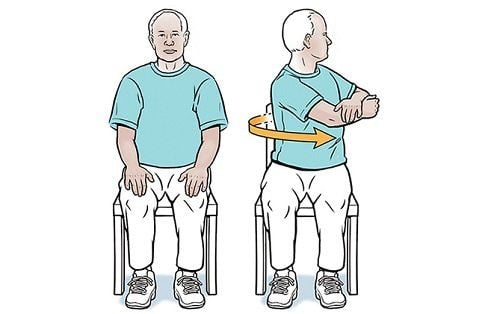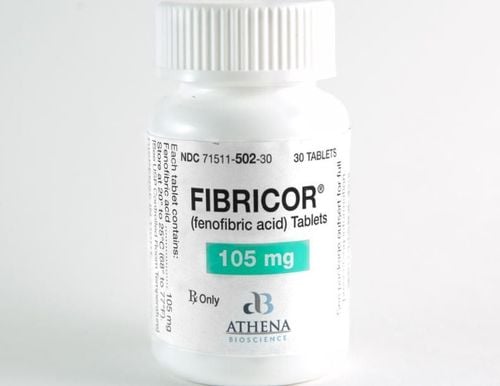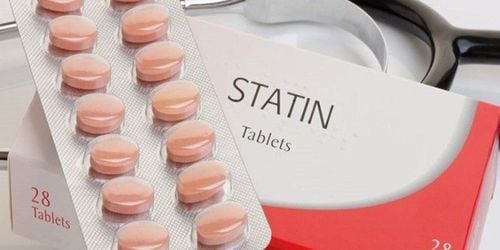This is an automatically translated article.
The article was written by MSc, Dr. Pham Thi Hai Yen, Department of Rehabilitation, Vinmec Times City International General HospitalMyocardial infarction is a very dangerous cardiovascular disease that if not detected early and treated will lead to death. Even with treatment, the disease affects some physical and mental functions. Rehabilitation for patients with myocardial infarction will help stabilize or reverse the process of atherosclerosis, reduce disease status, and reduce mortality.
1. Outline
Myocardial infarction is ischemic partial necrosis of the myocardium, caused by occlusion of one or more branches of a coronary artery.
Rehabilitation for patients with myocardial infarction is a multifaceted intervention that optimizes the patient's physical, psychological and social functions, in addition to stabilizing or even reversing Atherosclerotic process reduces morbidity and mortality.
Rehabilitation (rehabilitation) is carried out with the following methods: comprehensive - starting as soon as possible - continuous - divided into stages - individualized depending on the clinical condition - accepting the patient's condition - recovery time should not be limited.
2. Rehabilitation and treatment
2.1 Principles of rehabilitation treatment Physical rehabilitation - active therapy depends on the severity of the infarction and contraindications if any. Patients are exercised when:
No signs of cyanosis, sweating, low blood pressure; There are no signs of heart failure; No serious uncorrectable arrhythmias; There were no signs of severe or prolonged chest pain.

Bệnh nhân chỉ được tập khi không bị tụt huyết áp
2.2 Rehabilitation methods and techniques The selection of rehabilitation methods and techniques is divided into stages:
Stage 1: at the coronary artery disease care and rehabilitation room .. Stage 2: at the cardiovascular rehabilitation center, group training. Stage 3: long-term care, self-training or community-based rehabilitation. Stage 1
Standard of safe exercise: the first days after the myocardial infarction, rehabilitated with electrocardiogram monitoring. Blood pressure at exercise is not 20mmHg higher than at rest; Heart rate at exercise is not 20 beats higher than at rest; At discharge, the patient needs about 3-4 METs of daily activities. Phase 1 rehabilitation is broken down into smaller phases that gradually increase in intensity with the supervision of a technician.
Initiation: from the time of myocardial infarction to 12-48 hours of absolute bed rest; Initial phase: after 2-3 days after infarction, stable condition, uncomplicated: breathing exercises, relaxation exercises, small muscle groups; Continuous phase: 4-6 days after infarction, large muscle group exercises, sitting and standing, walking until after 02 weeks of climbing stairs with the help of technicians. The level of exercises is designed according to MET (Metabolic Equivalent of Task) standards. A unit used to measure the amount of oxygen the body consumes during physical activity.
1 MET is the cost of energy (Oxygen) to the body at rest such as sitting quietly or reading a book; Activity requiring 3-6 METs is considered moderate physical activity; Activity requiring > 6 METs is considered vigorous (vigorous) physical activity.

Bệnh nhân có thể ngồi im ở trạng thái nghỉ
Mobility exercises:
Rotate the ankle joint; Toe flexion; Flex and stretch the ankle; Exercise neck movement; Tension quadriceps; Exercise shoulder joint movement; Slip heels; Knee stretching exercises; Fold hips. Performed according to METs:
Activities <2METs: bed rest, personal hygiene, exercises 1-4 (5 times each, 2 times/day), self-feeding if sitting up; 2METs activities: exercises from 1 to 6 (5 times each, 2 times a day), sitting on a chair; Activities 3 METs: do exercises 1-7 (5 times each, 2 times a day), sit in a chair of your choice, walk in the room, shower in the chair; Activity 4 METs: do exercises 1-8 (5 times each, 2 times a day), sit in the room, walk outside the room > 100 meters, shower in the chair; Activity 5 METs: do exercises 1-9 (5 times each, 2 times a day), walk out of the room from 250-300 meters, shower in the bathroom; Activity > 5 METs: do exercises 1-9 (5 times each, 2 times/day), walk up one floor with a groupmate, shower in the bathroom; Get out of the hospital bed: days 4-10 with exercises in standing and sitting positions; walk in the faculty; climbing stairs before discharge, usually between the 2nd week; Pre-discharge stress test: Cycle dynamometer for 6 minutes, <5 METs with a heart rate lower than safe. The benefits of testing are in assessing response to exercise, in determining appropriate exercise, and in detecting the need for medication or surgical intervention.

Bài tập phục hồi chức năng dành cho bệnh nhân nhồi máu cơ tim
Exercise should be stopped immediately when the patient:
Coronary angina; Shortness of breath; Heart rate increased > 20 beats/min or decreased < 10 beats/min from resting heart rate; Exercises that cause significant arrhythmias; Exercise causes a decrease in BP >10–15 mHg, or an increase in BP (systolic BP >200 mmHg, diastolic >110 mmHg). Stage 2
Starting from 2-3 weeks post-infarction, lasting from 1-4 months, group training, at least 3 times/week.
Rehabilitation exercise program is appropriate for each patient with a specific myocardial infarction.
Start: walking on flat ground.
Intensity 50-70% of maximum exertion, should maintain about 4 METs; Heart rate does not exceed 20 beats compared to rest; The distance is about 3km/day after 4-6 weeks, depending on the individual patient's condition; Group exercise:
Warm-up 10-15 minutes: stretching exercises, joint movement exercises. Endurance training: Interval training: the time between cycling or walking lasts 15-30 minutes, every 3 minutes of exercise alternating with 2-3 minutes of rest. Intermittent training lasting 15 – 30 minutes (biking or walking) Resistance exercises performed as part of a static exercise supplement to the cycling activity.

Bài tập xe đạp nhẹ nhàng dành cho bệnh nhân nhồi máu cơ tim
Stage 3
Patient exercises at home or in a specialized rehabilitation facility: individual or group activities periodically supervised by a primary care physician and/or physician. Stage III Cardiac Rehabilitation: Usually begins 2 to 4 months after illness and continues beyond. There is no need for medical staff to observe and monitor continuously during exercise. Exercise intensity: individualized. - Walking, cycling, group exercises, playing group games - class (avoid contact sports) Group structure - class: 2 times/week for 8 weeks; 3 times/week for 6 weeks; 4 times/week for 3 weeks; Measure blood pressure, heart rate before and after exercise, identify patients at risk of low or high blood pressure or heart rate; Exercise: Warm-up stretch for 15 minutes (hold for at least 8-10 seconds) and stretch to cool down (retain 10-15 seconds). Cycle workouts include walking, jogging, treadmill walking, clocked bicycles, and rowing machines. Exercise intensity from 50-70% of maximum exertion. Continuous ECG monitoring according to each risk. Stage 2 and 3 exercises should be stopped or changed when:
Coronary chest pain; Shortness of breath; Heart rate increased or decreased by >10; Exercises that cause arrhythmias; BP >10–15 mm Hg (systolic BP >200 mmHg, diastolic >110 mm Hg). Recommended exercises :
Try to walk on flat surfaces; Go slower on undulating surfaces; Rest between sets; Rest at least 1 hour after eating or bathing before exercise; Avoid exercising in very hot/humid weather: greater than 80°F/75% humidity (>27°C); Avoid exercising when the weather is too cold/humid: practice rarely when the temperature is low, when there is no face covering or mask; If you are sick, do not exercise. When you feel better, start exercising again slowly. Monitoring and re-examination: monthly to adjust medication and exercise regimen.

Dừng tập khi xuất hiện dấu hiệu đau thắt ngực
To protect heart health in general and detect early signs of cardiovascular disease, customers can sign up for Cardiovascular Screening Package - Basic Cardiovascular Examination of Vinmec International General Hospital. The examination package helps to detect cardiovascular problems at the earliest through tests and modern imaging methods. The package is for all ages, genders and is especially essential for people with risk factors for cardiovascular disease.
Please dial HOTLINE for more information or register for an appointment HERE. Download MyVinmec app to make appointments faster and to manage your bookings easily.













